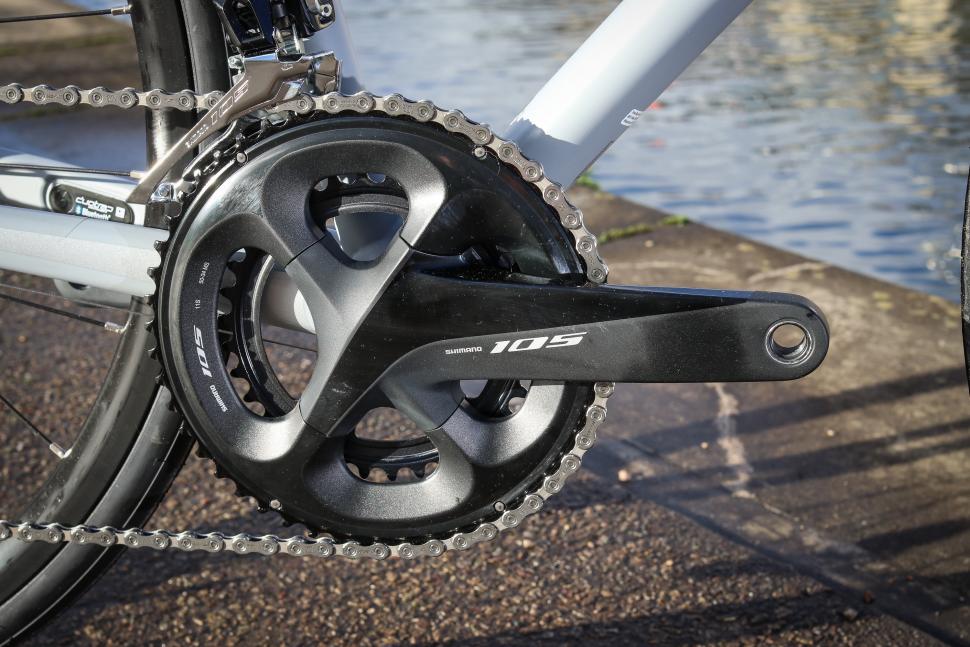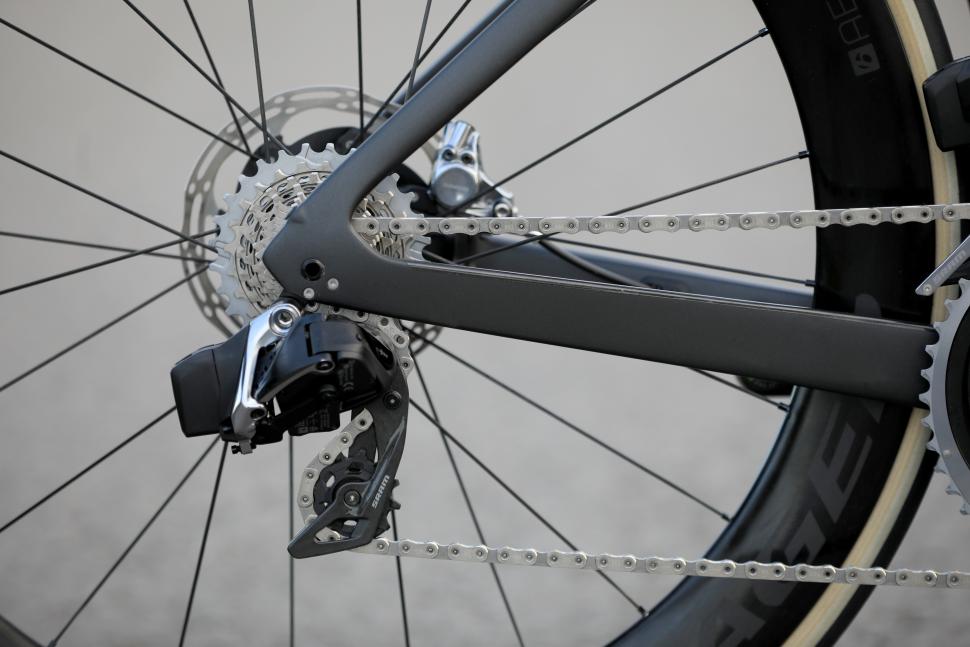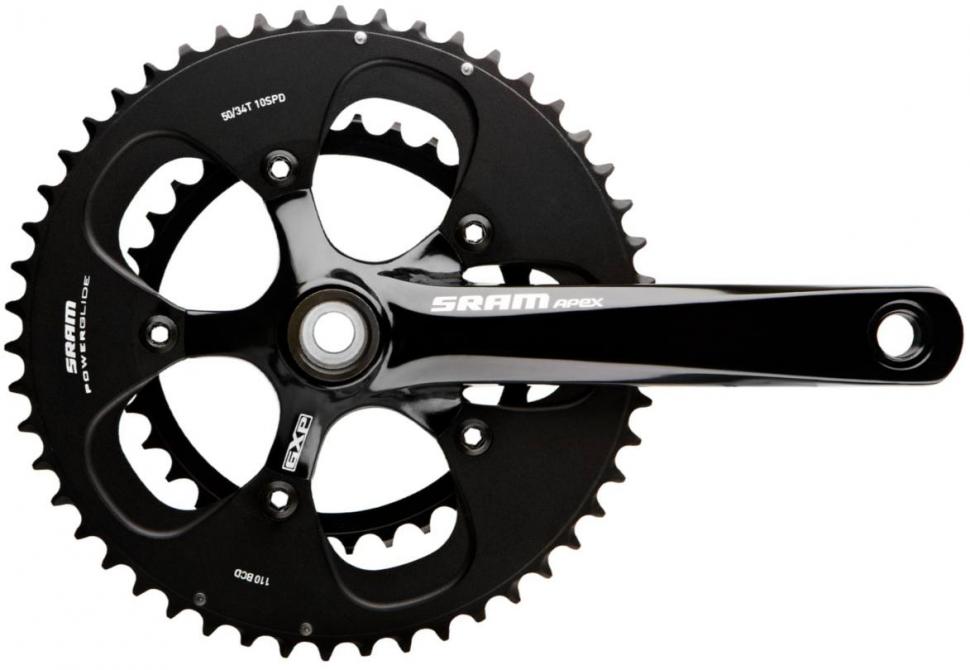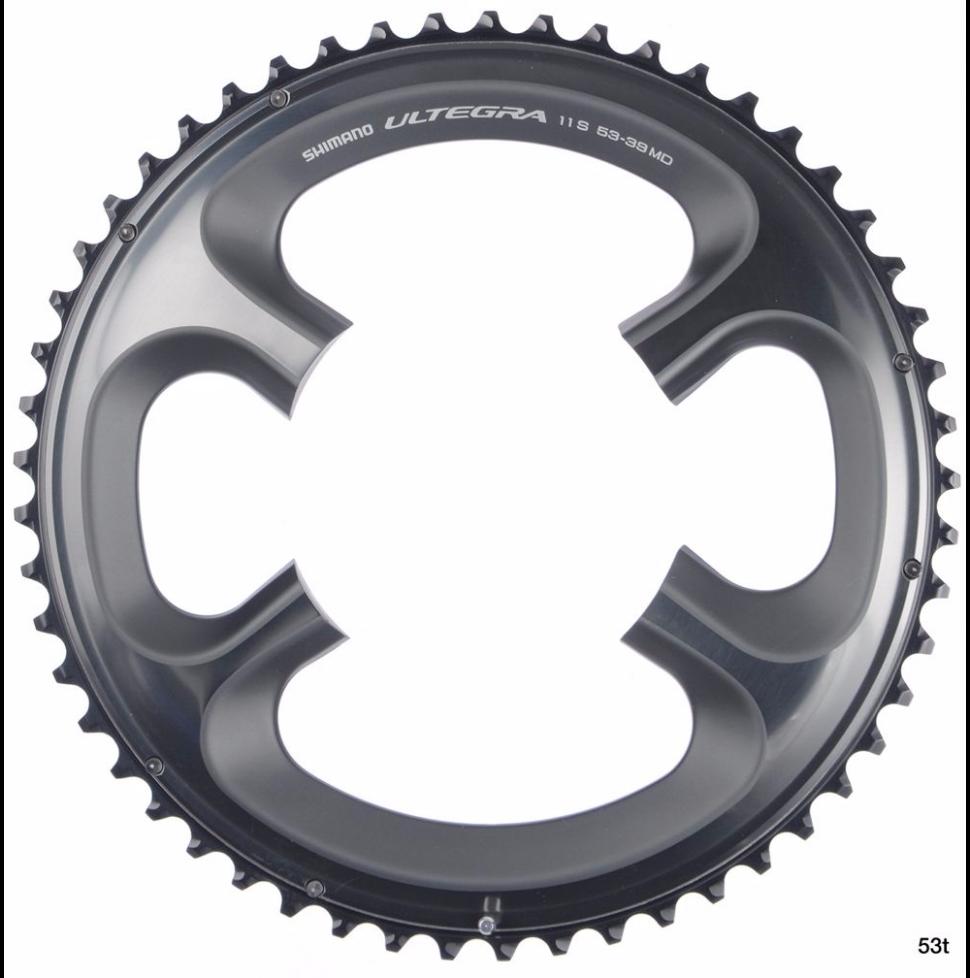- News
- Reviews
- Bikes
- Accessories
- Accessories - misc
- Computer mounts
- Bags
- Bar ends
- Bike bags & cases
- Bottle cages
- Bottles
- Cameras
- Car racks
- Child seats
- Computers
- Glasses
- GPS units
- Helmets
- Lights - front
- Lights - rear
- Lights - sets
- Locks
- Mirrors
- Mudguards
- Racks
- Pumps & CO2 inflators
- Puncture kits
- Reflectives
- Smart watches
- Stands and racks
- Trailers
- Clothing
- Components
- Bar tape & grips
- Bottom brackets
- Brake & gear cables
- Brake & STI levers
- Brake pads & spares
- Brakes
- Cassettes & freewheels
- Chains
- Chainsets & chainrings
- Derailleurs - front
- Derailleurs - rear
- Forks
- Gear levers & shifters
- Groupsets
- Handlebars & extensions
- Headsets
- Hubs
- Inner tubes
- Pedals
- Quick releases & skewers
- Saddles
- Seatposts
- Stems
- Wheels
- Tyres
- Health, fitness and nutrition
- Tools and workshop
- Miscellaneous
- Tubeless valves
- Buyers Guides
- Features
- Forum
- Recommends
- Podcast
feature
 Trek Emonda ALR5 - chainset.jpg
Trek Emonda ALR5 - chainset.jpgAre your chainrings and cassette worn? Here's how to tell when they need replacing
Your bike's drivetrain will gradually wear and you'll eventually need to replace the various components, but how do you tell when that time has come? We asked the experts at Shimano and SRAM.
We've previously dealt with the issue of when to replace your chain. Get all the info on that in our article: When should you replace your chain? That's a big factor here.
If you're unclear on any terms used below – chainring, cassette or sprocket, for example – head over to the road.cc A-Z of cycling jargon for an explanation.
"Over time, as your chain wears and stretches, you'll notice your gear shifts become less precise and less fast," says Shimano's Ben Hillsdon. "A worn out chain will also wear out your cassette and chainring teeth. The most important thing to change is the chain. Doing so can extend the lifetime of your cassette and chainrings, which in the end will save you money."
SRAM technical expert Chris Mckenney agrees.
"Chains, chainrings and cassettes all wear together," he says. "If a rider goes too long on one chain and/or doesn’t clean and lubricate their drivetrain regularly then the replacement costs can be high.
"Keeping an eye on chain wear is the best way to prolong cassette and chainring lifespan. SRAM recommends using a drop-in style chain checking tool to measure service life. Once the tool shows the chain is worn it's time for a new one. And keeping a chain clean and properly lubricated helps increase its service life."
Sooner or later, though, even if you follow all the advice, you'll need to change your cassette and chainrings. That's just the way of the world.
"You can consider replacing the cassette or chainrings at the same time as replacing the chain," says Shimano's Ben Hillsdon. "This will ensure you're not running a new chain on worn down gears which won't give you the precise shifting you replaced your chain for in the first place."
You certainly don't need to change the cassette and chainrings every time you swap the chain, though, it's just that you should check out the health and performance of these other drivetrain components as soon as you've installed a new one.
"Changes in tooth shapes and skipping under load are signs that your cassette needs replacing," says SRAM's Chris Mckenney. "It is very hard to see the changes in shape until they are well past the end of their lifespan but everyone has likely experienced a new chain skipping on worn cogs. It's a well-known phenomenon.
"The easiest way to determine if your cassette is worn out is to install a new chain. If the chain skips under pedalling load then it’s time for a new cassette. Of course, do this test in such a way that a skipping chain will not injure the rider! There are some cassette checking tools on the market but they are somewhat subjective to use. They all use the same principle of applying load to a new chain on worn cassette teeth so a parking lot test ride to see if the chain skips will give the same result."
Replacing your cassette is a relatively straightforward job that takes minutes, but you do need a couple of specialist tools: a chain whip and a lockring tool, sometimes called a cassette tool (make sure you get the right standard for the type of cassette you have).
Find out how to change your cassette
What about your chainrings?
"Rough/noisy running is the best way to tell if a chainring needs replacing," says Chris Mckenney of SRAM. "Unless a chainring is well beyond its service life it is very difficult to see this visually; chainring teeth slowly take on the shape of a shark’s fin in use.
 "An inner chainring is considered worn when a clean new chain starts to chain suck [when doesn't release well at the bottom of the chainring) and an outer chairing is considered worn when it is very rough running or the shifting is poor or inconsistent. It is somewhat of a judgment. However, if you see daylight between the teeth and a new chain then the chainrings are likely worn."
"An inner chainring is considered worn when a clean new chain starts to chain suck [when doesn't release well at the bottom of the chainring) and an outer chairing is considered worn when it is very rough running or the shifting is poor or inconsistent. It is somewhat of a judgment. However, if you see daylight between the teeth and a new chain then the chainrings are likely worn."
You should change your chain at the same time as the cassette and/or chainset.
"A worn chain on a new cassette or chainrings will only accelerate the wear," says Chris McKenney. "As the chain is typically the least expensive part in the system, it makes sense to add a new one when installing new chainrings or a cassette. Generally, installing the new chain is what confirmed the old parts were worn out anyway."
Brands don't offer guidelines relating to the mileage you're likely to get from your cassette or chainrings because there are too many variables involved, such as the conditions you ride in (rain, mud, dust...), whether the correct lube was used for those conditions, maintenance intervals and rider shift patterns.
For that reason, best practice is:
• Keep your drivetrain clean and lube your chain regularly.
• Check your chain for wear regularly and replace it as soon as required.
• Check the performance of the chainrings and cassette after a change of chain and replace as necessary.
Mat has been in cycling media since 1996, on titles including BikeRadar, Total Bike, Total Mountain Bike, What Mountain Bike and Mountain Biking UK, and he has been editor of 220 Triathlon and Cycling Plus. Mat has been road.cc technical editor for over a decade, testing bikes, fettling the latest kit, and trying out the most up-to-the-minute clothing. He has won his category in Ironman UK 70.3 and finished on the podium in both marathons he has run. Mat is a Cambridge graduate who did a post-grad in magazine journalism, and he is a winner of the Cycling Media Award for Specialist Online Writer. Now over 50, he's riding road and gravel bikes most days for fun and fitness rather than training for competitions.
Latest Comments
- levestane 3 sec ago
Reading this and watching the GCN review has made me realise that, for me, it's not the bike being steel (narrow tubes) that is the critical...
- mdavidford 5 min 28 sec ago
Depends. If they weren't much interested in protecting his financial affairs in the first place, they probably wouldn't be particularly concerned...
- Rendel Harris 7 min 24 sec ago
Given that the property is private a more elegant and less vandalistic approach would be to lock the bikes away somewhere and contact Lime to...
- Rendel Harris 19 min 36 sec ago
God yes, awful in every way, feeble light, gobbled batteries and so un-weatherproof that you had to take the batteries out and wipe out the innards...
- lesterama 53 min 56 sec ago
It'd probs be nicked the same day...
- David9694 1 hour 33 min ago
Try https://www.thetelegraphandargus.co.uk/news/24739976.overturned-car-chat...
- chrisonabike 1 hour 57 min ago
Yes - or:...
- Bungle_52 2 hours 34 min ago
Tweak no 1 then. The tag would need to beep at around 15mph getting more frequent as it approaches 20. It would come with an advisory note to...
- mark1a 3 hours 23 min ago
That will be along in a week or so in the annual reboot of the "All I want for Christmas is... not this" article along with the Park Tool pizza...
- hawkinspeter 3 hours 42 min ago
The problem with most jeans (i.e. not cycling designed ones) is that they've got the seam where it can intefere/chafe with the saddle. Also, cotton...



Add new comment
39 comments
I had to finally change the granny ring on my getting to work bike, Middleburn so ally, it never skipped, when a new chain was put on it would very occasionally "lock" in that it would grab one chain and not let it go, locking the drivetrain. Much like the skipping only under heavy load so unreproducible on the workstand so not the easiest to diagnose. After a few days of use after fitting a new chain it would start working well. The granny didn't even look that worn but after fitting the new ring the oddness went away, sorted.
The techie phrase for that is "chain suck", where worn teeth fit the chain in a particular way that makes it stick. It can easily cause a crash as your pedal jams. The rear derailleur gets pulled in and in serious cases damaged. Often the end result is a chain jammed between the chainrings and frame, and depending on bike design it ends up being a one way trip without removing the crank, which is non-trivial by the roadside. E-bikes with freewheel on the crank are worse because the rider cannot back-pedal, and the engine may not cut out immediately so will drive the chain hard into the frame.
Cheers for that, I had often heard the term, but never experienced it until relatively recently, so never connected the phrase with the effect.
Yes.
Worn chainrings can throw chain sideways.
I think a friend had this problem yet chain wheel looked good. Wear cuts could be seen via feel during effort of torque. He stacked it.
Hence skipping under load might be in the same way but the hanger doesn't have the leverage of the rear hanger to correct such with.
I don't know. I haven't ridden that hard. But that looks like what happened.
Yes, it is true.
I was this situation in LX front triple on middle aluminium chainring (36), after installing new cassette and new chain. Front chainrings was old.
Lukasz
If you do a lot of commuting miles, buy 3 or 4 chains, then rotate them, swapping every 500 miles. Doing that I managed to get over 12k miles out of this cassette. Then buy a new cassette, new large chainring and 4 more chains and repeat.
IMG_20190224_153417.jpg
That's quite a lot of faff, though - I've tried it myself before. Yes, I got 20,000 km out of three chains and a cassette. But life's too short to change the chain every 4 weeks and carefully bag it up. I just change the chain every 2,000 to 4,000 km now and get about 10,000 km out of a cassette (Veloce, ~£40, so running costs up by about ha'penny a mile)
If you had checked the chains for wear regularly and replaced them accordingly, you would still ride the cassette and the chainring.
Chainrings - Sharp, pointy teeth. Bad sign, think about replacing.
Pages